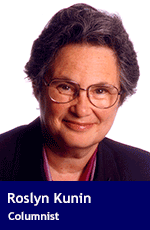 Vancouver is a great city. For people like me who use their feet for most of their transportation, it’s wonderful. But sometimes city decision-makers go overboard.
Vancouver is a great city. For people like me who use their feet for most of their transportation, it’s wonderful. But sometimes city decision-makers go overboard.
For recreation and exercise, there’s the 28-km seawall, part of which circles Stanley Park. It’s been voted the best place to run in Canada. There’s also the nine-km Arbutus Greenway running north/south across the city.
These are only a small part of the 140-km network of greenways that the City of Vancouver has built or planned. The aim is to have every residence within a 25-minute walk or 10-minute bike ride of a greenway.
I don’t bike, but I do walk and jog. And I really appreciate these scenic paths, as do the many runners, bikers, dog walkers, stroller pushers and others I see along them. I do notice, however, that even in peak times and in good weather, the number of people taking advantage of the trails is not very large.
I don’t have a car, so I also walk for transportation. I’m fortunate to live within four km of downtown and most of the other destinations I frequent. In many cases, this involves crossing a bridge. I use both the Burrard and Granville Bridges interchangeably, as they’re very close together.
About 10 years ago, the City of Vancouver implemented a plan to reduce vehicle traffic over the Burrard Bridge, devoting one car lane and one sidewalk to bicycles. Pedestrians used the other sidewalk. No problem. I was one of relatively few pedestrians.
In 2017, the city decided to reduce vehicle access on the bridge by another lane. It added a bike lane, fencing and esthetic improvements, and opened both sidewalks to walkers. The cost to the municipality’s taxpayers was $35 million, which doesn’t include the engineering and structural upgrades also done.
As a pedestrian, the fact that you could now walk on either side of the bridge made no difference.
Crossing the Granville Bridge recently, I was stopped by a woman who was interviewing walkers about a plan already adopted by the city to now spend at least $25 million creating an elevated greenway for walkers and bikers over that bridge. This was part of the public consultation program.
As a taxpayer, I wonder about governments that often adopt plans first with public consultation to follow.
I often use interviews as a research technique in my job so I noticed how cleverly the interview questions were designed to elicit a positive response to the project. They all centred on how wonderful the new greenway would be for the kind of people I very rarely see taking advantage of the similar and costly developments on the Burrard Bridge.
Some very important questions aren’t being asked. This project will be paid for by all the citizens of Vancouver. No one is asking them if they think that a greenway over the bridge is the best use of their tax money.
If we want to improve safety and esthetics in the Granville area, the money would be much better spent on improving conditions on Granville Street north of the bridge. I feel less safe waiting for a bus there than walking across the bridge.
Providing $25 million of modular housing for the homeless or reducing traffic congestion for the vast majority of Vancouverites who still use cars might be other options that voters would put ahead of more construction. That’s particularly true when it means more congestion getting into and out of downtown in order to add to the already expensive and ample bike and pedestrian capacity on the Burrard Bridge two short blocks away.
The city isn’t asking questions like that.
But in online polls simply asking if people approve of the Granville Bridge greenway, 60 per cent said no. This result was gathered without any mention of other ways the $25 million could be spent.
I admire the people who serve on city council. I remind them to give greater consideration to the needs and wants of all the people who elected them.
Troy Media columnist Roslyn Kunin is a consulting economist and speaker.
The views, opinions and positions expressed by columnists and contributors are the author’s alone. They do not inherently or expressly reflect the views, opinions and/or positions of our publication.
